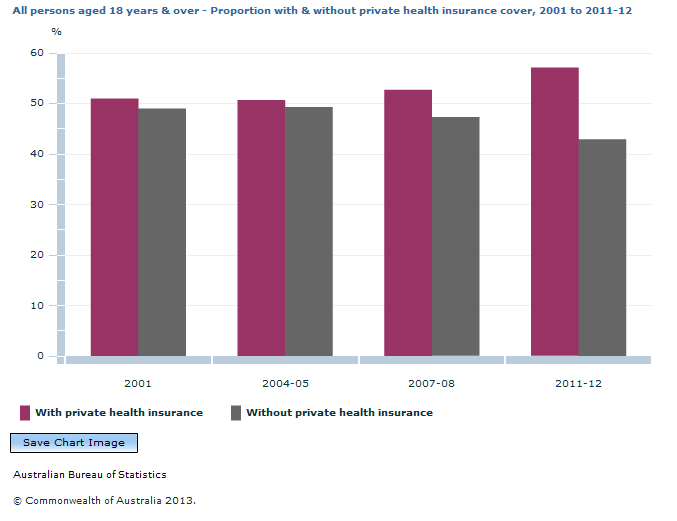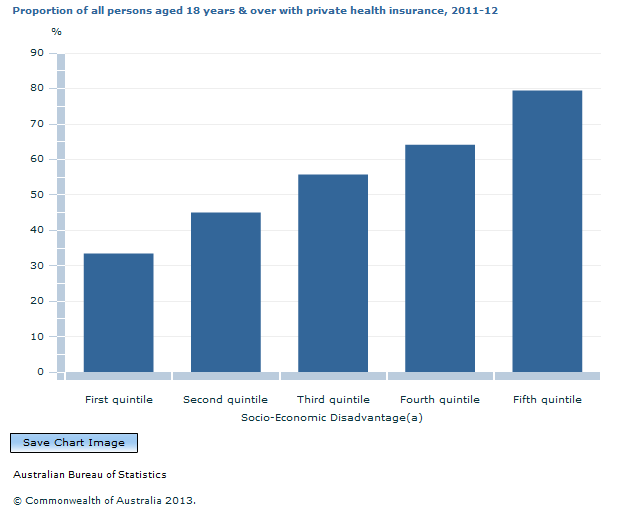4364.0.55.002 - Australian Health Survey: Health Service Usage and Health Related Actions, 2011-12
ARCHIVED ISSUE Released at 11:30 AM (CANBERRA TIME) 26/03/2013 First Issue
Page tools:
 Print Page Print Page
 Print All Print All
| ||||||
Private health insurance is additional health cover to that provided under Medicare1, to reimburse all or part of the cost of hospital and/or ancillary services incurred by an individual. In 2011-12 there were 9.7 million adult Australians with private health insurance (57.1% of all people 18 years and over). This was an increase from 2007-08 when 52.7% of adult Australians had private health insurance.  Of all people with private health insurance, most (79.1%) had both hospital and ancillary cover, while 12.3% had hospital cover only and 7.2% had ancillary cover only. This pattern was similar to 2007-08. Levels of private health insurance membership varied by age, with people aged 55-64 years having the highest coverage (67.5%). Just under half (47.2%) of young adults (18-24 year olds) had private health insurance. Levels of private health insurance membership also differed across a range of other demographic characteristics, particularly labour force status and levels of socio-economic disadvantage. People living in areas with relatively high levels of socio-economic disadvantage had the lowest levels of private health insurance in Australia (33.4%), while people living in areas of low disadvantage had the highest levels (79.4%).  Footnote(s): (a) Index of Relative Socio-Economic Disadvantage: a lower Index of Disadvantage quintile (e.g. the first quintile) indicates relatively greater disadvantage and a lack of advantage in general. A higher Index of Disadvantage (e.g. the fifth quintile) indicates a relative lack of disadvantage and greater advantage in general. See Index of Relative Socio-Economic Disadvantage in the Glossary. Source(s): Australian Health Survey: Health Service Usage and Health Related Actions Reasons for having/not having private health insurance 'Security, protection and peace of mind' was the most common reason for having private health insurance in 2011-12 (51.8% of all people with private health insurance), followed by 'allows treatment as private patient in hospital' (28.5%). The most common reasons for not having private health insurance were 'cannot afford it/too expensive' (58.3%) and 'Medicare cover sufficient' (18.7%). For more information see Table 1: Selected health service usage and health actions taken, Table 3: Selected health service usage by selected population characteristics and Table 17 Private health insurance. 1. Department of Human Services, March 2013, Medicare services, <http://www.humanservices.gov.au/customer/subjects/medicare-services>, Last accessed 22/03/2013.
|
||||||
